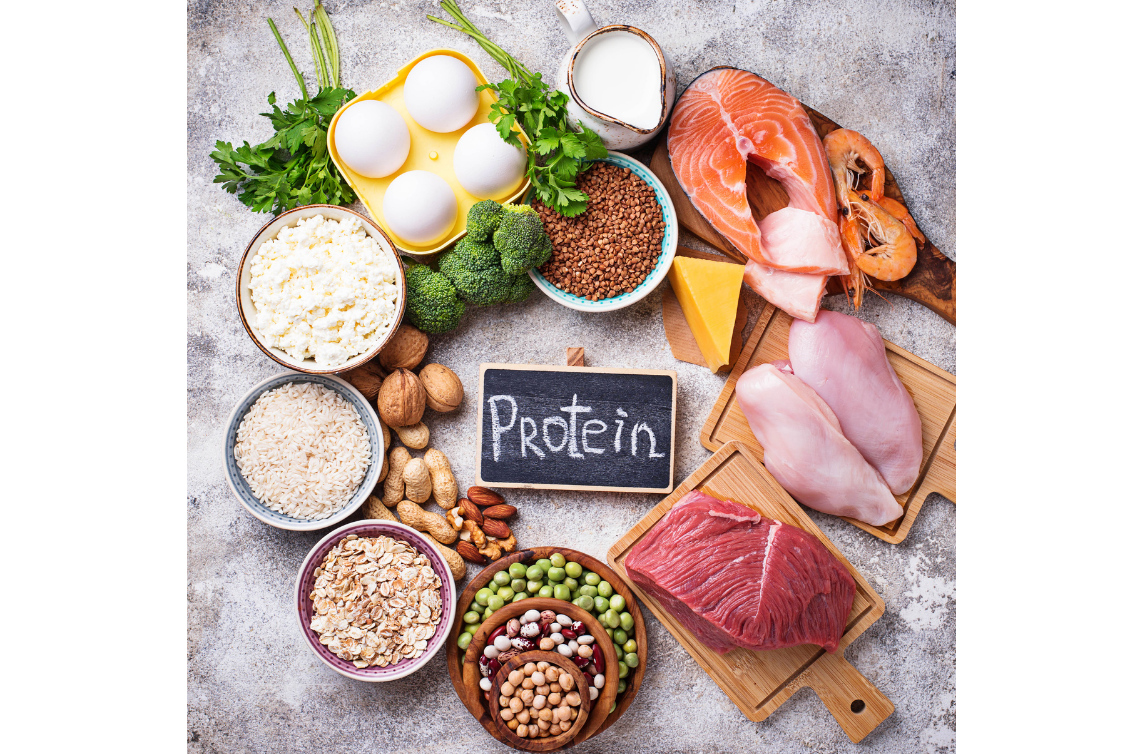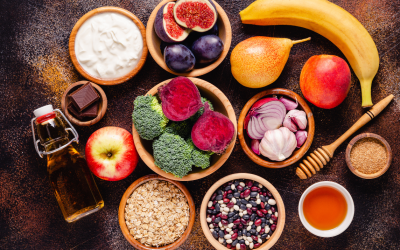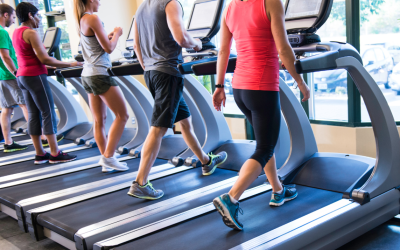If you have diabetes, are trying to prevent it, or are looking to lose weight, managing your blood sugar and protein intake is essential for maintaining balance and overall health. But it’s not as simple as eating a high protein, low carb diet. What KIND of protein you eat and WHEN you eat it matters as well.
For ADULTS, here’s a basic starting recommendation for how much protein you need.
If your weight is around . . .
150 lbs, you need about 55 grams protein daily
200 lbs, you need about 75 grams protein daily
250 lbs, you need about 90 grams protein daily
300 lbs, you need about 110 grams protein daily
To put that in perspective, a portion of meat the size of a deck of cards = about 20 grams protein.
Keep in mind that if you are not in good health, or are doing a lot of muscle work on a regular basis, your body usually needs more protein. There may also be health conditions that would require less protein. If that’s you, I would highly recommend talking to a dietitian for nutrition therapy and a personalized plan.
Over my 30 years providing medical nutrition therapy, I have found that these are the 3 biggest problems when it comes to eating protein.
Common Problem #1: Skipping protein at breakfast and eating A LOT for supper in the evening.
Getting protein at breakfast helps with weight and hunger control, while also stabilizing blood sugar and protein levels to prevent large spikes after breakfast. Try a smoothie, eggs, or leftovers for breakfast.
I think breakfast is one of the most challenging meals to get the protein in. Check out this article with some great protein breakfast ideas. I particularly like the smoked salmon on toast idea!
It’s also much better for your body if you can spread your protein intake more evenly throughout the day.
For example, if your goal is 75 grams of protein a day, you can break that up into 25 grams a meal or do 15 grams at meals + 10 grams for 3 snacks.
Common problem #2: Skipping the protein because you don’t want to cook meat for just YOU.
This is challenging if you live alone or don’t have the energy or strength to cook meals. If this is you I would consider a meal delivery service or take a day or two each month to batch cook several meals with a friend or family member. Then you can freeze them and just reheat them! Making batch meals for later use is a great way to support steady blood sugar and protein levels, even when you don’t feel like cooking meat for just you.
You could also try what I call snack meals when you just want a light meal. Just choose 2-3 foods from this list: cheese, yogurt, nuts, canned fish, peanut butter, cottage cheese, fresh fruit, veggies. Add a few crackers if it suits you.
Common problem #3: Avoiding high QUALITY protein because you think it’s bad for you.
Grass fed meat, wild caught fish, fresh seafood, eggs from free-range chickens, and organically grown plant proteins would be the highest quality sources.
I know the reality is that we can’t always afford to buy organic or grass fed, but if you can, definitely take advantage of these sources.
There’s still a common misconception that we have to avoid eggs or eat egg substitutes or only egg whites because for so many years we were told to limit eggs. Just to be clear this recommendation never had good research behind it. Eggs are a very high quality protein source loaded with nutrition, and can help support stable blood sugar and protein levels – so enjoy them!
There are some low protein or low QUALITY protein foods to be aware of as well. For example, almond milk is a popular alternative for those who don’t tolerate or like cow’s milk, but just remember, almond milk is low in protein.
And if you purchase protein shakes, check the ingredients and try to avoid unhealthy additives or ingredients, including most of the artificial sweeteners such as sucralose and aspartame.
Most processed meats like sausages, bologna and other lunch meats are not high quality so if you can avoid them most of the time. They do have protein but also a lot of unhealthy ingredients and preservatives/additives. Read the ingredients if you buy meats that are precooked or processed. Buy wild caught fish instead of farm raised if possible.
Regulation of Blood Sugar and Protein Intake is Even MORE Important as You Get Older!
Diabetes can slowly wear on your body and take away your independence. You can end up with problems like . . .
– nerve damage, which leads to balance problems, which makes you more at risk of falling.
– vision loss, which leads to losing your driver’s license, or even doing simple daily living tasks.
Diabetes complications can quickly put you in a position where you are more dependent on others to get places and take care of you. Of course, if we live long enough, we will all get to that point anyway, but for me, I want to stay independent as long as I can.
So, along with maintaining good blood sugar and protein levels, it’s important to get enough protein to help slow the loss of muscle as you age. Did you know we lose 30-50% of our muscle mass from age 40 to 80? and the less active we are the faster we will lose it.
Use it or Lose it, as the saying goes. Keep working your muscles as you age. Don’t retire and just sit around. Go to local classes, do home video exercises, sign up for the gym, do garden and yard work – whatever you can to help you stay strong!
As we get older we tend to eat less protein because of taste changes. Plus we often don’t get high QUALITY protein because we don’t cook as much. That’s the opposite of what we need! If we can’t eat as much it’s even MORE important to get good QUALITY protein!
Adults 50 and older need anywhere from about 50 grams to 80 grams of protein a day, depending on age, health situation, body weight, and other factors.
What are the best protein foods?
Just as a refresher, common protein foods include meats, seafood, fish, cow’s milk, cheese, cottage cheese, Greek yogurt. Bone broth is also an excellent source of protein.
Plant protein foods include nuts and nut butters, beans, peas, lentils, hemp seeds, pumpkin seeds, spelt, quinoa, and soy products.
Ideas to try to Power Up Your Protein at Meals & Snacks
We talked about breakfast ideas above, so here’s some tips for the rest of your day.
For a healthy lunch, choose your favorite protein food and your favorite veggies.
Add meat, cheese, beans, cottage cheese or nuts or pumpkin seeds to salad greens for a great meal.
Have cheese or cottage cheese or yogurt or nuts along with fruit for a snack.
Bean soups are so easy and are a great cold weather meal loaded with fiber and protein.
Sample day
Breakfast: 2 eggs, 1 toast = about 15 grams protein
Morning snack: Apple slices with 2 tablespoons peanut butter = 7 grams protein
Lunch: Salad with 2 oz meat, cheese, plus seeds or nuts for about 15 grams protein
Afternoon snack: 3 ½ oz Greek yogurt with fruit = about 10 grams protein
Dinner/Supper: 1 ½ cups homemade chili with meat and beans = almost 30 grams protein
So there you have 77 grams for the day! This would also add up to be a low to average carb intake for a day, estimated at about 120 grams.
Struggling with evening snacking?
This might be an idea to try . . . recent research study found that drinking a protein shake before bed allowed the body to digest and absorb the protein during the night. We always think of having protein shakes for breakfast but having one in the evening might be a great way to keep hunger, cravings and overeating under control. Plus, protein shakes are also great for regulation blood sugar and protein levels!
I hope this article has helped clear up some confusion when it comes to protein. Please share your comments and questions below!
If you are struggling with your protein intake, carb control or meal planning and want to talk about working together, click here to send me a message!







0 Comments